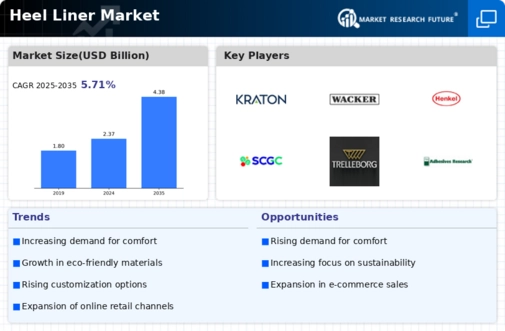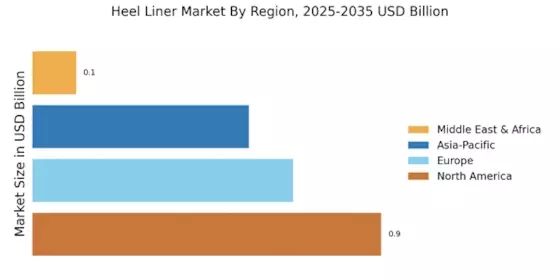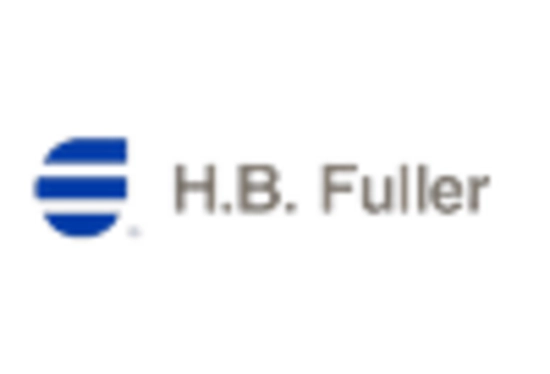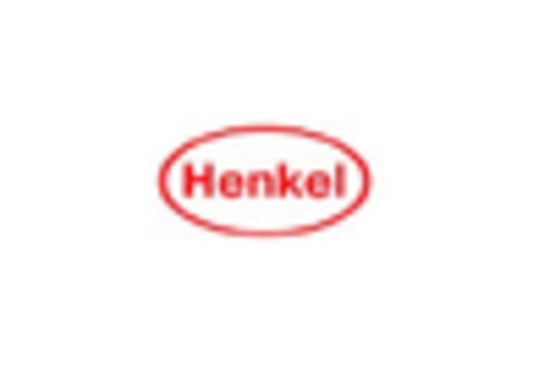The Heel Liner Market is currently characterized by a dynamic competitive landscape, driven by innovation, sustainability, and strategic partnerships. Key players such as 3M (US), BASF (DE), and Henkel (DE) are actively shaping the market through their distinct operational focuses. 3M (US) emphasizes innovation in adhesive technologies, aiming to enhance product performance and user experience. BASF (DE) is leveraging its extensive chemical expertise to develop eco-friendly materials, aligning with the growing demand for sustainable solutions. Meanwhile, Henkel (DE) is pursuing strategic acquisitions to bolster its product portfolio, thereby enhancing its market presence. Collectively, these strategies contribute to a competitive environment that prioritizes technological advancement and sustainability.
In terms of business tactics, companies are increasingly localizing manufacturing to reduce lead times and optimize supply chains. This approach appears to be particularly effective in a moderately fragmented market, where the collective influence of key players is significant. The focus on supply chain optimization not only enhances operational efficiency but also allows companies to respond swiftly to market demands, thereby reinforcing their competitive positions.
In August 2025, 3M (US) announced the launch of a new line of eco-friendly heel liners designed to reduce environmental impact while maintaining high performance. This strategic move underscores 3M's commitment to sustainability and innovation, potentially attracting environmentally conscious consumers and setting a new standard in the industry. The introduction of these products may also enhance 3M's competitive edge by differentiating its offerings in a crowded marketplace.
In September 2025, BASF (DE) unveiled a partnership with a leading footwear manufacturer to develop advanced heel liner materials that incorporate bio-based components. This collaboration not only highlights BASF's focus on sustainability but also positions the company as a key player in the transition towards greener manufacturing practices. The strategic importance of this partnership lies in its potential to expand BASF's market reach while addressing the increasing consumer demand for sustainable products.
In October 2025, Henkel (DE) completed the acquisition of a regional adhesive manufacturer, which is expected to enhance its capabilities in producing specialized heel liners. This acquisition reflects Henkel's strategy to strengthen its market position through targeted growth initiatives. By integrating the acquired company's technologies and expertise, Henkel is likely to improve its product offerings and expand its customer base, thereby reinforcing its competitive stance in the market.
As of October 2025, the competitive trends in the Heel Liner Market are increasingly defined by digitalization, sustainability, and the integration of artificial intelligence. Strategic alliances are becoming more prevalent, as companies seek to leverage complementary strengths to enhance their market positions. Looking ahead, it is anticipated that competitive differentiation will evolve, shifting from traditional price-based competition to a focus on innovation, technological advancements, and supply chain reliability. This transition may redefine the competitive landscape, compelling companies to invest in research and development to stay ahead.


















Leave a Comment